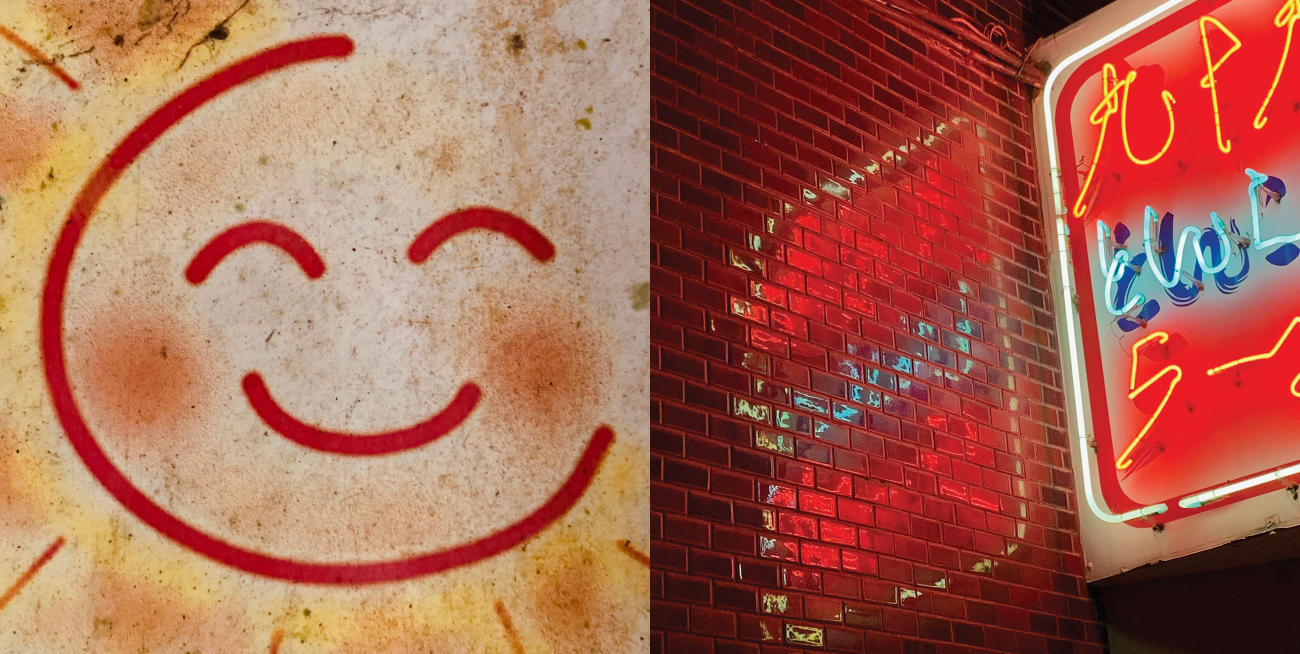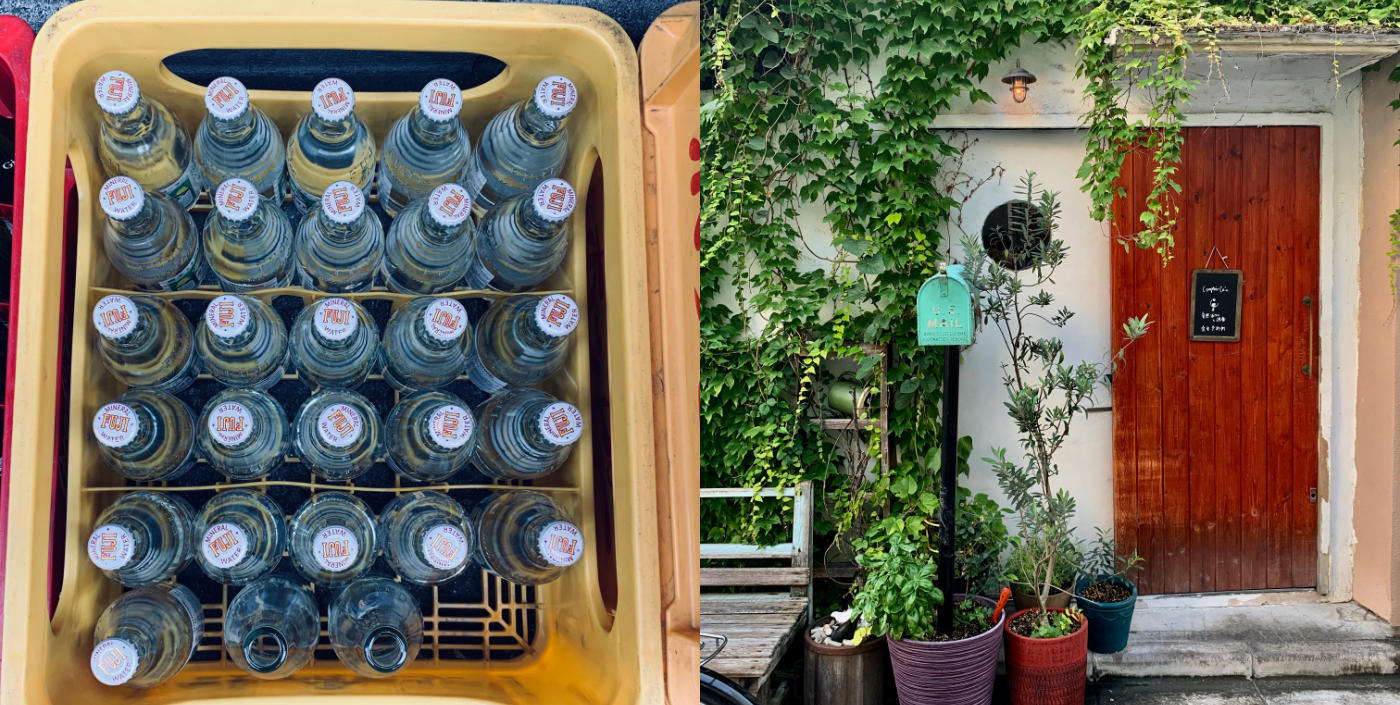Walking into tomorrow
Christopher Grimes, executive editor of Nikkei Asia on how the Covid-19 pandemic provided him with an opportunity to take stock, look forward and fall in love with Tokyo all over again
Our family’s hanami, or cherry blossom viewing party, was held indoors this year. The children cut blossoms out of pink construction paper and taped them to the windows and walls of our apartment. My wife spread a blue plastic tarp on the floor, just as we would have done if we had been in Yoyogi Park with thousands of others enjoying a traditional April cherry blossom picnic.
We sat on the floor, the adults sipping sake, and ate our bento. It was festive and fun, though tinged with disappointment – good preparation for a nervous year of caution, canceled plans and tempered expectations. A few days after our hanami (home-nami, as it became known) Tokyo declared a state of emergency that would last for nearly two months.
“During this surreal period a new and fascinating Tokyo began to open up for me”
It seems strange to say, but during this surreal period a new and fascinating Tokyo began to open up for me. We were all cooped up in the apartment during the week – wife Zooming in the living room, kids taking classes from their bedrooms while I worked away from mine – and the feeling of isolation was slowly getting to everyone.
To cope, we began taking epic weekend walks with a neighboring family, each time with a different destination. We wanted to comply with the spirit of the emergency decree, so we tried to take out-of-the way routes along small streets, canals, rivers or waterfronts. It was a lovely spring, and we often notched up 15 km or more – sometimes prompting grumbling from the teenagers, though they admit now that these walks were the highlight of an otherwise difficult period.
“Around the same time I began to cycle around Tokyo late at night, visiting areas that usually heave with activity in the small hours”
Around the same time I began to cycle around Tokyo late at night, visiting areas that usually heave with activity in the small hours. The ostensible goal was to take photographs of the dark, empty city, but the rides also served as a way to burn off anxiety and nervous energy amid the pandemic.
Seeing Tokyo almost exclusively on foot or by bike opened my eyes, allowing me to take a more intimate look at different neighborhoods and to see the natural beauty that lies outside of the city’s immaculate parks and gardens.
These intra-city journeys also led me to think about Tokyo’s post-pandemic future, and whether the health crisis could also plant the seeds for greener cities around the world.
As spring turned to summer and the Covid-19 crisis began to share split-screen coverage with raging wildfires in the western US, I became convinced urban planners around the world need to begin re-thinking the car-centric city – and quickly.
The pandemic has already forced us to change where we work, and how. What other changes will it bring – and what changes do we want it to bring? These are the central questions behind this issue of Unlock, in which we asked experts and political leaders to tell us about the opportunities for positive change – and Tokyo’s opportunities to lead in the post-pandemic world. Tokyo has been an inspiration to other cities for decades, through its famously efficient and clean system of subways and trains and impeccable urban planning.
In an exclusive piece, Toshiko Mori sketches out a vision of Tokyo based around two ideas – making the city more walkable and creating more public space around its waterfront. Her plan would reclaim land and create more parks, encouraging people to walk through Tokyo’s hidden neighborhoods – or “connective tissue”, as she puts it – in between.
Her ideas resonate with me. Our family walks included visits to Ningyocho, a charming old neighborhood that was an entertainment district in the Edo period, and Jakuzure, a walking path that connects Nakameguro to Sangenjaya.
We spent long hours on Tennozu Isle, where converted warehouses and a new art complex seem a good model for how Tokyo could develop its waterfront sites.
Architects and urban planners will have a big role in reimagining Tokyo, but the city will also be reshaped in the post-pandemic era by the rapid uptake of new technology and big shifts in the way we work, dine and shop.
At our company and others, there is a near-constant debate about whether working from home will outlast Covid-19. Among my colleagues, there was an uneasiness about the idea of working at home in the beginning, but many have embraced it. While Zoom conferencing and communicating through Slack are no substitute for good face-to-face meetings or spontaneous water cooler chats, colleagues say they don’t miss their long commutes, dry cleaning bills or late hours.
“A permanent shift to more flexible ways of working would revolutionize Japanese work culture”
Many say they would like to spend some days in the office and some at home, depending on what they have to do. A permanent shift to more flexible ways of working would revolutionize Japanese work culture while also easing congestion in city centers and rush-hour traffic.
The pandemic has also raised similarly seismic questions about education, tourism and even dining. Many of the tech investors we have interviewed this year at Nikkei Asia have been pouring money into online education startups, which have seen demand surge along with the value of their companies. It is early days in this market however – just ask parents how satisfied they are with their children’s remote learning experiences.
Those same investors have been bullish on startups specializing in online food delivery and e-commerce, two sectors that have performed very well during the pandemic – and whose growing presence could reshape the physical city if they mean more dining and shopping from home. Would Tokyo ever allow drone deliveries of ramen or bubble tea? Perhaps, though it may not be wise to bet on Tokyoites losing their love for dining out or shopping for bargains at the depato.
In our exclusive interview, Tokyo Governor Yuriko Koike lays out her case for why Tokyo should become Asia’s new financial capital in the wake of another major event in 2020: the passing of the controversial National Security Law in Hong Kong.
The NSL, backed by Beijing following months of pro-democracy protests, has raised fears among hedge funds, media organizations and other businesses about freedom of speech and the rule of law in Hong Kong. Koike, who has long had her sights on attracting more financial firms and other international businesses to Tokyo, is promoting a package of incentives that she hopes will bring them to the city.
It is this kind of bold vision and optimism that will set Tokyo on course for a post-pandemic future. It is one I look forward to seeing – preferably on foot or bicycle, of course.
“It is this kind of bold vision and optimism that will set Tokyo on course for a post-pandemic future. It is one I look forward to seeing – preferably on foot or bicycle, of course”
Christopher Grimes

